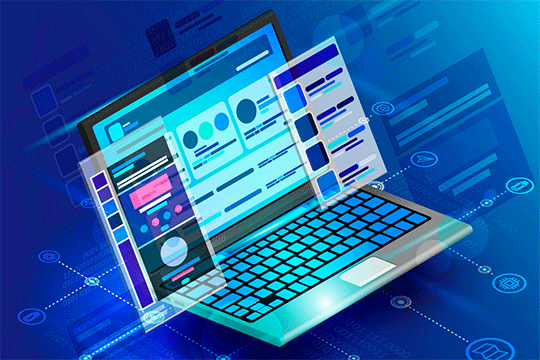Software as a Service
Software as a service (SaaS) is an alternative to the tradition on-premise software and application installation.
Software as a Service (SaaS)
Software as a service (SaaS) is a software distribution model in which a third-party provider hosts applications and makes them available to customers over the Internet. SaaS is one of three main categories of cloud computing, alongside infrastructure as a service and platform as a service (IaaS and PaaS).
SaaS is closely related to the application service provider (ASP) and on demand computing software delivery models. The hosted application management model of SaaS is similar to ASP, where the provider hosts the customer’s software and delivers it to approved end users over the internet.
Why SaaS?
Your legacy telephony infrastructure is dragging you down – modern communications and collaboration technology can dramatically improve productivity.
Companies provide software & services on-demand through the cloud. In the SaaS model, the provider provides customers with network-based access to a single copy of an application that the provider created specifically for the SaaS distribution. The source code of the application is the same for all clients and when new features or functionalities are implemented, they are distributed to all clients. Depending on the service level agreement (SLA), customer data for each model can be stored locally, in the cloud or hybrid (both locally and in the cloud). Organizations can integrate SaaS applications with other software using application programming interfaces (APIs). For example, a company can write its own software tools and use the SaaS provider APIs to integrate those tools with the SaaS offering.
There are SaaS applications for critical business technologies, such as email, sales management, customer relationship management (CRM), financial management, human resources management (HRM), billing and collaboration. The main providers of SaaS include Salesforce, Oracle, SAP, Intuit and Microsoft.
Advantages of SaaS
Only pay for what you use.
You also save money because the SaaS service automatically scales up and down according to the level of usage.
Use free client software.
Users can run most SaaS apps directly from their web browser without needing to download and install any software, although some apps require plug-ins. This means that you don’t need to purchase and install special software for your users.
Mobilise your workforce easily.
SaaS makes it easy to “mobilise” your workforce because users can access SaaS apps and data from any Internet-connected computer or mobile device. You don’t need to worry about developing apps to run on different types of computers and devices because the service provider has already done so. In addition, you don’t need to bring special expertise onboard to manage the security issues inherent in mobile computing. A carefully chosen service provider will ensure the security of your data, regardless of the type of device consuming it.
Access app data from anywhere.
With data stored in the cloud, users can access their information from any Internet-connected computer or mobile device. And when app data is stored in the cloud, no data is lost if a user’s computer or device fails.
Quick Setup & Deployment
Software that is pre-configured to your business’ requirements minimizing the delays associated with traditional software installation and configuration.
Easy Upgrades
Centrally-deployed upgrades of your hosted applications removing workload and responsibility from you.
Scalability
Subscription options providing you flexibility to change when needed as your business grows.



